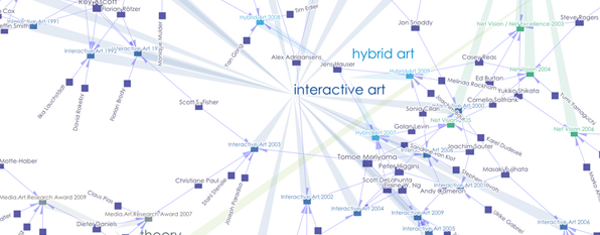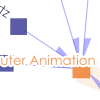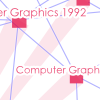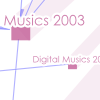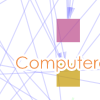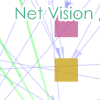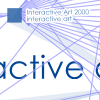Media Art as Social Process
Media Art as Social Process — Network Analysis of the Makeup of the Juries and Their Decisions
The annual jury sessions to determine the prizewinning projects constitute another interesting topic. This raises the question of the extent to which there is a correlation between the substantive development of media art and the social structures of the protagonists involved: the artists and the jurors. The places on the respective juries are filled with new faces each year. And the categories themselves have undergone a constant process of change: old ones are retired or programmatically redefined and new ones introduced. Employing the methods of social network analysis seems to be the obvious solution here. Now, when all the jurors who served throughout the history of this competition are linked to their respective jury sessions, the result is a bi-partite network that can subsequently be investigated.
It’s interesting to note that this network is a single, contiguous, unitary affair and, for instance, does not break up into various sub-networks corresponding to the Prix categories. This means that there have been no jury sessions (with one single exception1) without overlapping personnel with respect to a prior jury and, of considerably greater importance, that various individuals served as jurors in different categories over the years. This is an insight that becomes immediately evident when we examine the network visualization, but would have been much less obvious if the material had been considered on a textual basis only. The network visualization also shows that some categories are clearly delimited from the others and are dominated by key protagonists, whereas others are more strongly interwoven and do not seem to have core personnel. The use of the “centrality mass” concept from network analysis makes it possible to differentiate among various roles of the jurors involved. Some jurors seem to dominate a single category, whereas others appear in several contexts and function as bridges between different categories. The practice of inviting prizewinning artists to serve as jurors the following year additionally brings their contacts and knowledge contexts into play, and contributes to expanding the scope of and adding new facets to the categories.
These interdisciplinary junctions are also present in the counterpart to the jury network: the network of prizewinning artists. Here too, there is a surprisingly high degree of network linkup. This area is dominated by two sub-networks (that are-still?-not interconnected): on the one hand, the “microcosm” of the U19 category for young people and the Next Idea competition, and, on the other hand, the remaining Prix Ars Electronica categories. If one reduces the entire network to individuals with several awards, then the substantive bridges among the categories become clearly evident. The information content of these relations should, of course, not be over-interpreted; nevertheless, the existing networks provide a surprisingly multifaceted and richly detailed picture that persons familiar with the material can appreciate and confirm on the basis of their own experience.
Dietmar Offenhuber
Gerhard Dirmoser
Programming
Dietmar Offenhuber
Datasets
Ars Electronica Thesaurus
Gallery
open in new window
open in new window
open in new window
open in new window
open in new window
open in new window
open in new window


